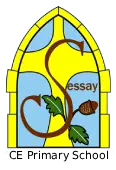History
Intent:
We have designed our Sessay History Curriculum to be a high-quality history education which will help pupils gain a coherent knowledge and understanding of Britain’s past and that of the wider world.
It will inspire pupils to be curious and creative thinkers who develop a complex knowledge of local and national history and the history of the wider world. We want pupils to develop their confidence to think critically, ask questions, and be able to explain and analyse historical evidence.
We aim to build an awareness of significant events and individuals in global, British and local history and for the children to recognise how things have changed over time through supporting pupils in building their understanding of chronology, making connections over periods of time and developing a chronologically-secure knowledge of History.
Implementation:
Our history curriculum is supported by the Kapow scheme of work. History at Sessay is integrated into our curriculum through half termly topics. It is taught discretely and is woven throughout other subjects across the curriculum. It follows the spiral curriculum model where previous skills and knowledge are returned to and built upon. For example, children progress by developing their knowledge and understanding of substantive and disciplinary concepts by experiencing them in a range of historical contexts and periods.
We develop pupils’ understanding of how historians study the past and construct accounts and the skills to carry out their own historical enquiries.
Our history curriculum has five key strands:
- Topic knowledge
- Chronological awareness
- Substantive concepts
- Historical enquiry
- Disciplinary concepts
Children develop their understanding of the following key disciplinary concepts throughout our history curriculum.
- Change and continuity.
- Cause and consequence.
- Similarities and differences.
- Historical significance.
- Historical interpretations.
- Sources of evidence
Hands on, practical experiences are provided to the children as regularly as possible. Visits and visitors are carefully selected termly to enhance the history curriculum. Opportunities to explore local history through learning inside and outside the classroom supports children in understanding their own place in history. IT is used to inspire and enrich our history curriculum and build on skills such as researching.
Impact:
Our children will be historians, equipped with a range of skills to enable them to succeed on their learning journey in their secondary education. They will be enquiring learners who ask questions and can make suggestions about where to find the evidence to answer the question. They will be critical and analytical thinkers who are able to make informed and balanced judgements based on their knowledge of the past.







